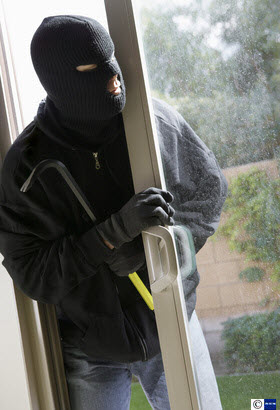Surveillance Video Equipment Extras for Your Home Security System
Along with your surveillance camera, you'll need several additional types of surveillance video equipment to complete your security system.
Housings
Cameras need to be protected from vandalism and the elements, making the camera housing an essential piece of surveillance video equipment. Housings can range from simple coverings to impact-resistant protection to outdoor housings that include heaters and cooling blowers.
Specialized camera housing may include:
- Internal defroster to prevent camera housing from fogging to obstruct vision.
- Internal particle protection to prevent dust deposits from collecting.
- Tinted Plexiglas hemisphere dome to prevent subjects from seeing which direction a camera is pointing.
- Sun-shield to provide thermal insulation for camera operation ranging from -4°F to 122°F.
Choose the right housing based on the placement of the camera and its expected usage.

Monitors
Selecting a monitor for your surveillance video equipment is a relatively minor decision, but there are a couple of important points to keep in mind.
First, make sure to purchase a monitor designed for security use. Televisions are not a good choice since TVs are built to be on for a few hours per day, not the 8 to 24 hours per day required by surveillance video equipment.
In some cases, computer monitors make acceptable substitutes. Flat-panel LCD screens make great CCTV monitors for larger systems because they take up little space, have excellent resolution, and generate less heat than standard monitors.
Also, consider the size: A 9" monitor may be sufficient if the operator is sitting directly in front of it, but a 15" monitor is the smallest you should choose if you plan to combine images from all your surveillance video equipment onto a single monitor.
Video surveillance monitors may be equipped with advanced features like:
- Wall mount compliance or ergonomic tilt for ease of use.
- High DEF resolution for improved clarity.
- BNC and RCA connector looping for video/audio output and input.
- On-screen display operating controls for added convenience.
Today, limitless video surveillance monitoring options are available beyond a standard TV and may include laptop, tablet, PC, and smartphone monitoring.
Pan, Tilt, Zoom - PTZ
For advanced security applications, you may want surveillance video equipment with pan, tilt, zoom (PTZ) capabilities. With the right equipment, a camera operator can pan (scan left and right), tilt (look up and down), and zoom in and out.
The significant catch is the cost: PTZ systems are considerably more expensive than fixed cameras. They also require a dedicated operator to monitor and run the system.
PTZ features may range from standard to advanced to include:
- 360° pan with auto-flip rotation.
- E-flip functionality to rotate an image right-side up after a 90° tilt.
- Enhanced optical and digital zoom, up to 35X optical and 12X digital in some cameras.
- Auto-tracking to automatically follow moving objects.
PTZ features are most beneficial for wide-area monitoring; speed domes can be used for high-performance PTZ functionality.
Ready to Compare Video Surveillance Systems Price Quotes?